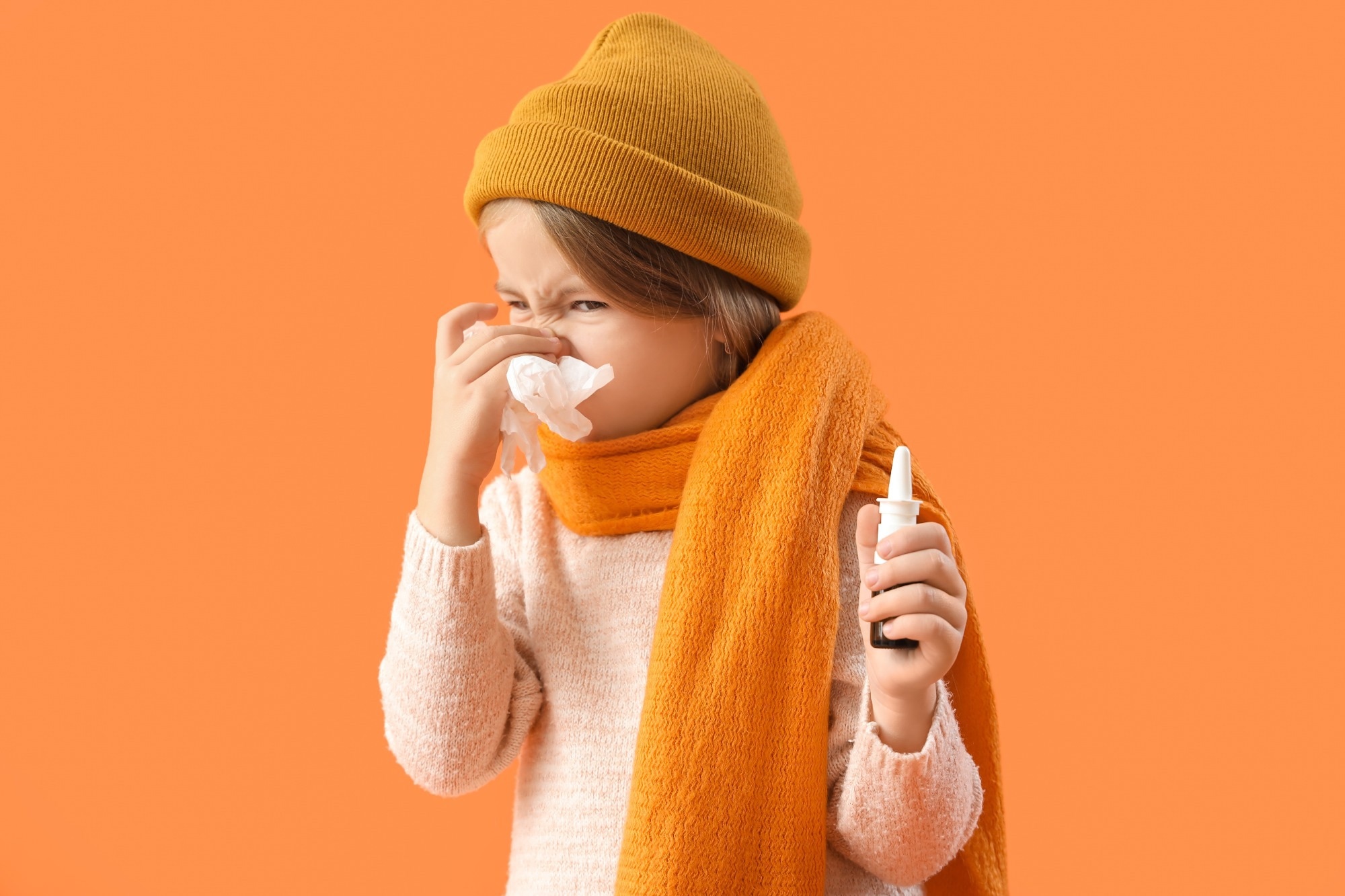Studies have reported heightened nasal innate immune activation in children compared to adults with or without severe acute respiratory syndrome coronavirus 2 (SARS-CoV-2) infection. However, the biological drivers of this heightened immunity in children are unknown. Pre-pandemic data reports indicate that children have a higher rate of colonization with airway pathobionts and more frequent infections with viruses than adults.
Reports suggest that even pathobiont colonization or asymptomatic viral infections could elicit a host mucosal response. This may mean that a higher bacterial pathobiont or viral burden might drive the heightened nasal immunity in pediatric populations. If proven true, the presence/load of pathobionts at sampling could predict nasal immunophenotypes in children.
 Study: High burden of viruses and bacterial pathobionts drives heightened nasal innate immunity in children. Image Credit: Pixel-Shot / Shutterstock
Study: High burden of viruses and bacterial pathobionts drives heightened nasal innate immunity in children. Image Credit: Pixel-Shot / Shutterstock
The study and findings
In the present study, researchers revealed the distinct activation patterns of nasal innate immunity in children predicted by the burden and types of microbes in the nasopharynx. They collected nasopharyngeal (NP) swab samples from individuals aged ≤ 22 between June 3 and July 2, 2021, a period with relatively few pediatric COVID-19 cases, and in January 2022, during the Omicron surge, with the highest rate of pediatric infections in the United States (US).
Samples were collected from asymptomatic children screened for elective surgery and those presenting to the emergency department with respiratory symptoms or other reasons. Overall, 176 samples were obtained in 2021 and 291 in 2022. Non-SARS-CoV-2 viruses were detected in 10 samples in 2021 and five in 2022.
None of the 2021 samples tested positive for SARS-CoV-2, while 65 samples from 2022 were SARS-CoV-2+. In the SARS-CoV-2+ group, 16 were asymptomatic, 15 were hospitalized, and 34 were outpatients. Further, residual NP swabs were tested for 16 respiratory viruses using quantitative polymerase chain reaction (qPCR) tests. This revealed that the prevalence of respiratory viruses was much higher than at clinical testing.
Rhinovirus (RV) was predominant in 2021 and SARS-CoV-2 in 2022, albeit many samples also tested positive for several seasonal viruses. The viral positivity rate was 38.6% in 2021 and 36.4% in 2022. Next, qPCR tests were performed for three common bacterial pathobionts in the upper airways. All bacterial pathobionts (Haemophilus influenzae, Moraxella catarrhalis, and Streptococcus pneumoniae) were detected.
Bacterial pathobionts and viruses were prevalent in children under five. Overall, 44.3% and 53.3% of samples in 2021 and 2022 were positive for bacteria, viruses, or both, and the corresponding estimates for those aged < 5 were 66.2% and 78.7%, respectively. Although there were more symptomatic subjects in this age group, viral and bacterial enrichment was apparent in asymptomatic children.
Besides, viral load was significantly higher in bacterial pathobiont-positive samples; likewise, pathobiont load was significantly higher in virus-positive samples. Next, immunoassays evaluated the activation of mucosal interferon response by measuring C-X-C motif chemokine ligand 10 (CXCL10) in all samples. CXCL10 concentrations correlated with viral load. CXCL10 and viral load were less likely to be elevated in those without respiratory symptoms.
CXCL10 levels did not correlate with age or pathobiont load. Further experiments showed that coinfections with other respiratory viruses triggered a more robust mucosal response. In addition, the team investigated whether the presence of bacterial pathobionts correlates with changes in the activation of nasal mucosal immunity. More than 3,800 differentially expressed genes (DEGs) were identified between RV-positive pathobiont-high and -low samples.
Granulocyte/neutrophil activation and migration, immune responses to fungi/bacteria, and tumor necrosis factor (TNF) interleukin-1 (IL-1) family cytokine production pathways were upregulated in RV-positive pathobiont-high samples. By contrast, cilium assembly and movement were enriched in RV-positive pathobiont-low samples. IL-1α, IL-1β, and TNF were among the top 10 DEGs at the protein level.
Next, the team examined correlations between TNF, IL-1β, and CXCL10 protein levels and microbial drivers in children under five. CXCL10 enrichment in virus-positive samples was independent of the pathobiont status. The presence of pathobionts alone was not associated with an increase in CXCL10. TNF and IL-1β were elicited in samples positive for virus or pathobionts and were highly associated with mucosal response to pathobionts.
Conclusions
Together, the findings revealed a relationship between the presence/abundance of the virus and the activation of the mucosal interferon response. Likewise, bacterial pathobiont load was also strongly associated with the activation of proinflammatory responses. The study could not explain how nasal immunophenotypes may have influenced disease outcomes/symptoms, as most individuals were treated as outpatients and did not have severe illnesses. Therefore, future studies should assess how nasal phenotypes at infection/diagnosis could influence clinical severity and outcomes.